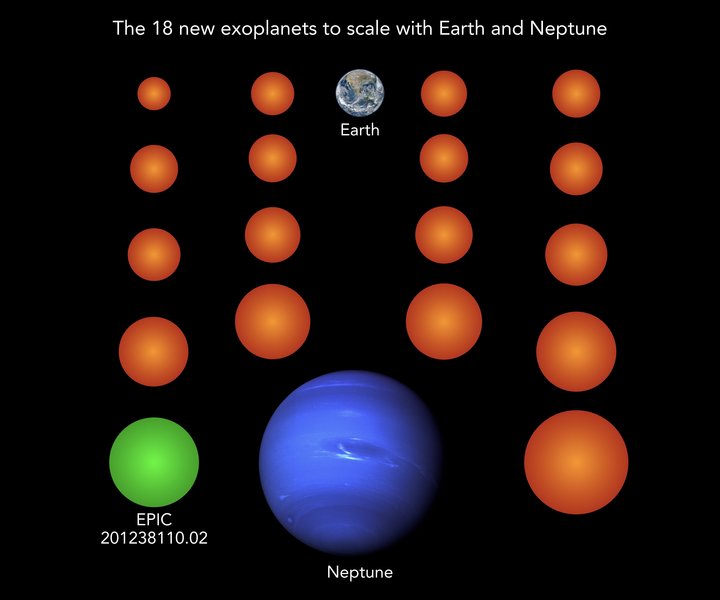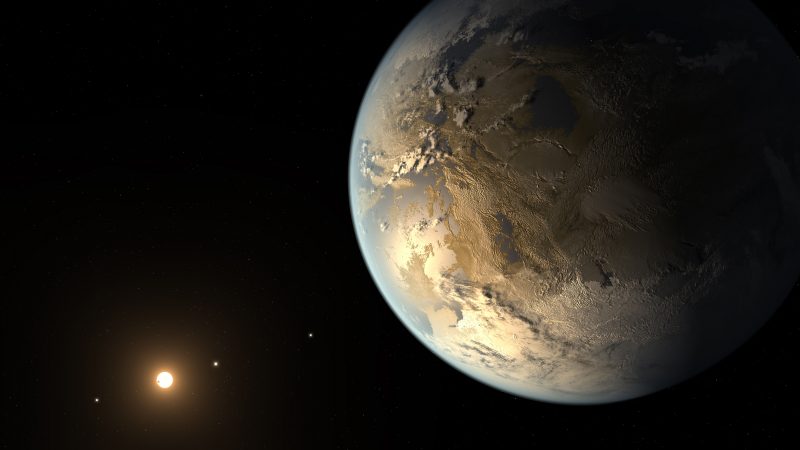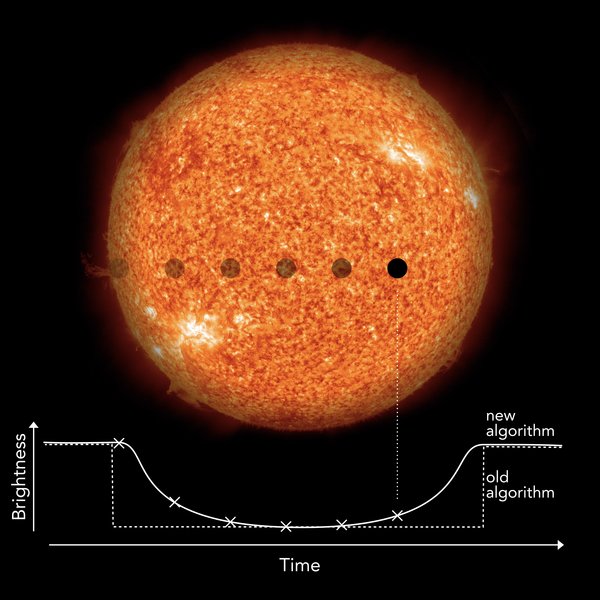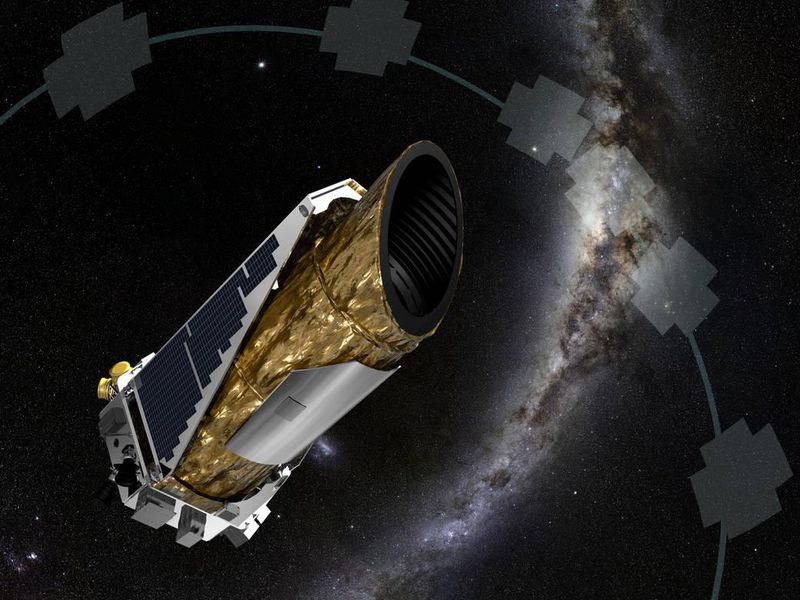Astronomers find 18 more Earth-sized exoplanets in Kepler data
Posted by Paul Scott Anderson in Space | May 27, 2019A new survey algorithm – called Transit Least-Squares – has just caused the number of known, rocky, Earth-sized worlds orbiting distant stars to grow again, as astronomers add another 18 exoplanets to the list.

Size comparison with Earth, Neptune and the 18 newly discovered exoplanets. Wouldn’t it be grand to see surface details on these new worlds? Image via NASA/JPL (Neptune), NASA/NOAA/GSFC/Suomi NPP/VIIRS/Norman Kuring (Earth), MPS/René Heller.
Exoplanets about the same size as Earth can be some of the most difficult to detect, but their numbers are growing, and now scientists from the Max Planck Institute for Solar System Research, the Georg August University of Göttingen and the Sonneberg Observatory have added 18 more exoplanets to the ever-expanding list (as of May 1, 2019, there were 4,058 confirmed planets in 3,033 systems, with 658 systems having more than one planet). All 18 new exoplanets were found during a re-analysis of data from the highly effective Kepler Space Telescope planet-hunting mission, using a new, more sensitive search algorithm called Transit Least-Squares.
The first fruits of the new algorithm may be found in peer-reviewed findings published in the journal Astronomy & Astrophysics in two new papers, here and here. The first paper, focusing on exoplanet K2-32e, was published a few weeks ago, and the second paper regarding the other 17 exoplanets was published on May 21, 2019.
These newly-found worlds are some of the smallest detected so far. They range in size from only 69 percent of the diameter of Earth (EPIC 201497682.03, 831 light-years away) to just slightly more than twice as large as Earth. All of them were hiding in the Kepler data, and were not found in previous searches because the search algorithms were not sensitive enough. Like many other exoplanet hunters, Kepler used the transit method, where a planet passes in front of its star, as seen from our vantage point here on Earth. As the planet transits in front of the star, it blocks out a tiny amount of the light coming from the star, which can then be measured by astronomers. As René Heller of Max Planck Institute, first author of both papers, explained:
Standard search algorithms attempt to identify sudden drops in brightness. In reality, however, a stellar disk appears slightly darker at the edge than in the center. When a planet moves in front of a star, it therefore initially blocks less starlight than at the mid-time of the transit. The maximum dimming of the star occurs in the center of the transit just before the star becomes gradually brighter again.

Artist’s concept of Kepler-186f, the first Earth-sized exoplanet found orbiting in the habitable zone of its star. A growing number of such worlds have been found in recent years, including the 18 new exoplanets just announced. Image via NASA Ames/JPL-Caltech/T. Pyle.
As could be expected, larger planets are the easiest to detect, since they block out more light from their stars during a transit. The amount of light blocked by smaller planets can easily be missed, as it can be hard to distinguish from the natural brightness fluctuations of the star itself and the background noise that is part of these kinds of observations.
All of the new planets were found in data from the K2 part of the Kepler mission. The K2 phase was initiated after the primary mission ended in 2013, after technical malfunctions with the telescope’s reaction wheels, which helped to keep Kepler stable for its observations of stars (K2 then ended in 2018). These researchers re-analyzed the 517 stars from K2 that were known to have at least one planet each.Our new algorithm helps to draw a more realistic picture of the exoplanet population in space. This method constitutes a significant step forward, especially in the search for Earth-like planets.

The transit method looks for exoplanets as they pass in front of their stars. The new, more sensitive Transit Least-Squares algorithm can detect smaller planets like Earth. Image via NASA/SDO (Sun), MPS/René Heller.
So what are these new planets like?
Most of them, unfortunately, are not good candidates for life, orbiting their stars closer than any seen before, with temperatures ranging from over 212 degrees Fahrenheit (100 degrees Celsius) to 1,832 degrees Fahrenheit (1,000 degrees Celsius). One of them, however, EPIC 201238110.02, orbits within its star’s habitable zone, the region around a star where liquid water can exist. EPIC 201238110.02 is 1.87 times Earth’s diameter and 522 light-years away.
The first planet, K2-32e, orbits the star EPIC 205071984 and is the fourth known planet in that system. The other three planets are all Neptune-sized.
It is now expected that – using Transit Least-Squares – astronomers should be able to find at least another 100 Earth-sized planets in the data from the primary Kepler mission phase. This bodes well for discovering many more such worlds with other telescopes as well, such as NASA’s orbiting TESS satellite, the newest member of the planet-hunting family, which has picked up where Kepler left off.
The European Space Agency’s PLATO is another mission that will benefit from these findings with the new algorithm, according to Laurent Gizon, managing director at the Max Planck Institute for Solar System Research:
This new method is also particularly useful to prepare for the upcoming PLATO mission to be launched in 2026 by the European Space Agency.

The 18 new exoplanets were discovered in data from the Kepler Space Telescope, which ended its mission in late 2018. Image via NASA.
Future telescopes, both space and land-based, are expected to find thousands more exoplanets in the years ahead, including ones that are Earth-sized, like these 18 new ones. Some telescopes, such as NASA’s upcoming James Webb Space Telescope, will also be able to analyze the atmospheres of some of those distant worlds, looking for trace gases that may be a sign of life.
Bottom line: With another 18 Earth-sized exoplanets found hiding in Kepler data, astronomers continue to confirm that not only does this kind of rocky world exist elsewhere, but also that they are rather common. How many of them may turn out to be habitable for some kind of life is still unknown, but these discoveries are bringing us closer to finding the first evidence for life outside of our solar system.
Source: Transit least-squares survey – I. Discovery and validation of an Earth-sized planet in the four-planet system K2-32 near the 1:2:5:7 resonance
Source: Transit least-squares survey – II. Discovery and validation of 17 new sub- to super-Earth-sized planets in multi-planet systems from K2
Via Max Planck Institute for Solar System Research
Thanks to: https://earthsky.org






 Sat Mar 23, 2024 11:33 pm by globalturbo
Sat Mar 23, 2024 11:33 pm by globalturbo

